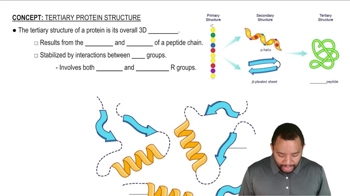Give two names for each of the following alkyl halides and indicate whether each is primary, secondary, or tertiary:
c.
d.

 Verified step by step guidance
Verified step by step guidance Verified video answer for a similar problem:
Verified video answer for a similar problem:



 1:52m
1:52mMaster How to name alkyl halides with a bite sized video explanation from Johnny
Start learning